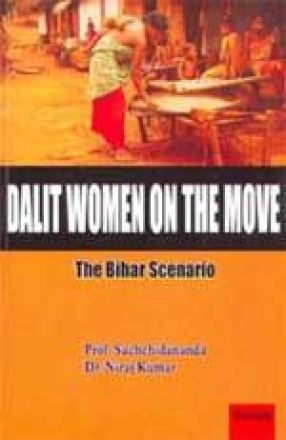Man, Forest and The State in Middle India
Synopsis
A large section of the Indian population in middle India extending from Gujarat to West Bengal live in and around forests. People were used to living in peace interacting with the environment without creating any problems. From the mid 19th century, the State became another stakeholder in the forest. From time to time policies were made and legislation enacted to regulate the relationship between the local inhabitants, the forest and the government. The bulk of the population involved comprise the Scheduled Tribes and some other backward castes who depended largely on the forest for their subsistence. 74 Scheduled Tribes in the country identified as ‘Primitive Tribal Groups’ totally depend on the forest for survival. They are usually small groups in pre-agricultural economy and are facing acute problems of survival. Some tribes in the area subsist as artisans. Three lakh families eke out a subsistence by working in wood, bamboo and grass craft and manufacture of Katha by using the axe to cut the shape wood, bamboo and cane. Even the agricultural tribes depend for many of their life needs on the forest. Since most of the tribals have traditionally depended on forest for their livelihood their entire social and cultural life revolves around the forest. They regarded themselves as lords of the forest. But on account of Forest legislation such as the Wild Life Protection Act and the Forest Conservation Act and reservation of forests, they have been reduced to the status of concession holders. Any breach of the forest legislation lands them in jail. The forest, therefore has become the biggest irritant in the relationship between the tribals and the State. This study was conducted in the States of Jharkhand, Orissa and Madhya Pradesh (including Chattisgarh). It seeks to highlight forest as a source of livelihood for the tribals, the role of nontimber of forest produce in tribal economy, the relationship between tribal culture and heritage with the forest. Community participation through Social Forestry and Joint Forest Management and the shortcomings of planning in this regard have also been brought out. The important role played by women in this sector has been highlighted. Towards the end of the book a vision for the future in regard to the interface between people, forest and the government has been conceived. This would naturally involve a reorientation of forest policy and management and more importantly a change in the mindset of Forest officials at different levels so that the interest of the local inhabitants are not sacrificed the dominant national interest. There is need to provide opportunity for a search for community solutions, more involvement of NGOs and promotion of a bigger role of women in forest management. The best strategy is to plan upwards from community level based on local knowledge and institutions and sharing decision making power with the local communities.
Read more
28.80
25.92
$
32.00 $
Free delivery Wolrdwidе in 10-18 days
Ships in 1-2 days from New Delhi
Membership for 1 Year $35.00
Get it now and save 10%
Get it now and save 10%
BECOME A MEMBER










Bibliographic information